A Comprehensive Review of the Latest iPhones
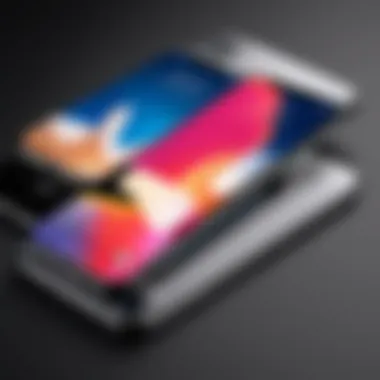
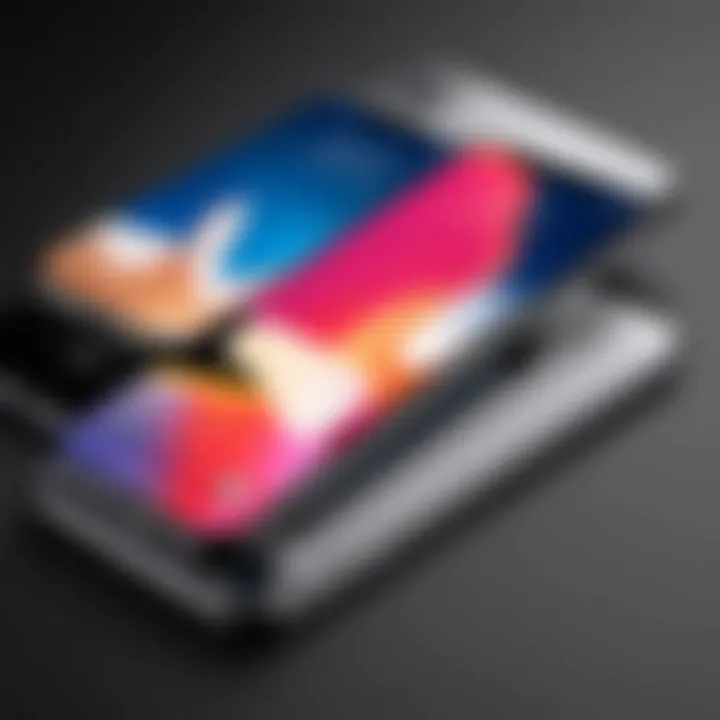
Intro
The latest iPhone models have garnered significant attention in the tech community. This attention is due not only to Apple's acclaimed design prowess but also to the underlying innovations and functionalities these devices offer. As the smartphone market becomes increasingly competitive, IT professionals and tech enthusiasts are keen to understand how these devices integrate into the Apple ecosystem and how they stand against competing brands. This analysis aims to provide essential insights into new features, performance metrics, and unique selling propositions that set the latest iPhones apart from their predecessors and competitors.
Features Overview
Key Specifications
The newest iPhones come equipped with remarkable specifications that enhance their appeal. Here are some key points to note:
- A16 Bionic Chip: This chip offers improved CPU and GPU performance, making tasks such as gaming and multitasking seamless.
- ProMotion Display: With a refresh rate of up to 120Hz, the display provides a more fluid viewing experience.
- Camera System: Significant advancements in low-light performance and computational photography set these models apart in the smartphone market.
These specifications not only enhance the overall user experience but also align with growing user demands for performance and reliability.
Unique Selling Points
Apple's latest iPhones introduce several unique features that distinguish them from other smartphones:
- Integrated Ecosystem: Seamless connectivity with products like Apple Watch and iPad enhances functionality.
- iOS Compatibility: The latest iOS version maximizes the phone's capabilities and maintains user-friendly interfaces.
- Privacy Features: Advanced security features ensure user data is protected, appealing to privacy-conscious customers.
"Apple's commitment to innovation and user security remains central to its strategy in the highly competitive smartphone market."
Performance Analysis
Benchmarking Results
When evaluating performance, benchmarking tools like Geekbench and AnTuTu provide objective data. Recent tests show that the latest iPhones outperform many competitors in both single-core and multi-core tasks. The A16 Bionic chip is notably one of the fastest chips available in a smartphone today.
Real-world Scenarios
In everyday use, the enhanced capabilities of the latest iPhones shine. Tasks such as:
- Streaming high-definition video
- Running demanding applications
- Multitasking with several apps simultaneously
These scenarios underscore the device's ability to maintain performance under pressure. User reports indicate minimal lag, making them suitable for both casual users and industry professionals.
Preface to the Latest iPhones
In the rapidly evolving smartphone market, the introduction of new iPhone models signifies much more than just another product launch. The latest iPhones serve as beacons of technological advancement, encapsulating Apple’s commitment to innovation. For IT professionals and tech enthusiasts, understanding these devices is crucial. Apple positions its latest offerings not only as tools of communication but as integral components of a larger ecosystem, enhancing user experiences across devices.
Overview of Apple's iPhone Evolution
The iPhone has undergone significant transformation since its initial release in 2007. Each iteration has brought about unique features and improvements that reflect changing consumer preferences and technological advancements.
- First Generation: The original iPhone revolutionized smartphones with its touch interface and minimalistic design.
- Evolution Over the Years:
- Recent Models: The latest models integrate advanced features like 5G connectivity, improved AI capabilities, and enhanced security features, all while maintaining a sleek design aesthetic.
- Subsequent versions introduced larger displays, better cameras, and enhanced processing power.
- The introduction of the App Store created a massive third-party ecosystem that defined mobile applications.
Apple’s evolution is not only about hardware; software updates and ecosystem integration have played an essential role. Each version runs on the latest iOS, ensuring compatibility and security for users. By exploring the trends within this evolution, we can better appreciate how the latest devices not only maintain relevance but also push boundaries in the industry.
Understanding the development of the iPhone provides valuable context for evaluating the latest models and their implications in technology today.
iPhone Models Released
The release of new iPhone models is a significant event in both the tech industry and consumer market. Each launch represents not just a hardware upgrade, but an evolution in mobile technology and user experience. Understanding these new models can provide insights into consumer trends and competitive strategies. This section will delve into the latest offerings from Apple, specifically the iPhone 15 series and its variants, highlighting the innovations and changes that set these devices apart from their predecessors.
iPhone Series
The iPhone 15 series consists of several models, each designed to cater to different segments of the market. This series continues Apple's tradition of refining its devices with enhanced features and specifications, which are increasingly important as consumers seek more value from their purchases. The introduction of the iPhone 15 series brings several improvements, including better processing power, advanced camera capabilities, and optimized battery performance.
The iPhone 15 series marks a transition in how Apple designs its smartphones. With a focus on sustainability, the materials used in these models include recycled elements, showcasing Apple’s commitment to reducing its ecological footprint. Furthermore, the design is more refined, with ergonomic shaping and a variety of color options that appeal to a wider audience.


iPhone Pro and Pro Max
The iPhone 15 Pro and Pro Max stand out in the lineup due to their high-end specifications and features. These models are equipped with the latest A17 Bionic chip, which greatly enhances performance, especially in graphics-intensive applications such as gaming and video editing. This performance boost is complemented by improved RAM and storage options, offering users the ability to run multiple applications smoothly and store large amounts of data without compromising speed.
An important feature of the Pro models is the camera system. The iPhone 15 Pro and Pro Max include advanced optical zoom capabilities and enhanced night mode, making them suitable for both casual and professional photographers. The hardware is complemented by sophisticated software enhancements, allowing for functionalities like Photonic Engine, which significantly improves image processing capabilities.
Moreover, the design includes a new titanium frame, which not only reduces weight but also increases durability. The integration of USB-C technology for charging and data transfer is a significant change, addressing long-standing consumer demands for a universal charging solution.
iPhone and Plus
The iPhone 15 and 15 Plus models cater to consumers looking for premium features at a more accessible price point. These versions maintain the core design language established by their Pro counterparts but lack some of the high-end specifications found in the Pro models. They are powered by the A16 chip, which still offers excellent performance suitable for everyday use and most applications.
The primary differences stem from the camera capabilities, where the iPhone 15 models incorporate a dual-camera setup as opposed to the triple-camera system in the Pro models. Nevertheless, they still provide robust photo quality, with software optimizations that allow for improved photo capabilities during various conditions.
Additionally, the sizes of the regular iPhone 15 and 15 Plus offer choices for users depending on their preferences for screen real estate. The Plus model is particularly aimed at those who prefer larger displays for multimedia consumption or productivity tasks.
In summary, the latest iPhone models released demonstrate Apple's continued innovation and responsiveness to consumer preferences. Each model is thoughtfully designed to offer distinct advantages, making the entire series noteworthy for both consumers and industry observers.
Key Features and Specifications
The key features and specifications of the latest iPhones play a significant role in understanding their capabilities and advantages in the current smartphone market. This section highlights the essential aspects that distinguish these models from their predecessors and competitors.
Display and Design Enhancements
The design of the latest iPhones has evolved to offer a more immersive user experience. With the introduction of the Super Retina XDR display, users can expect brighter, more vibrant colors and deeper blacks, enhancing viewing in different lighting conditions. The materials used have also improved, with Ceramic Shield on the front providing better drop performance. The sleek design not only appeals aesthetically but also improves ergonomics, making the devices more comfortable to handle.
Performance Upgrades
Chipset Specifications
The A16 Bionic chip is one of the standout features of the new iPhones. Its 6-core CPU and 5-core GPU provide excellent performance for demanding applications. This chipset allows for smoother multitasking, which is a crucial aspect for users who rely on their devices for work and productivity. The energy efficiency also means that users can enjoy extended battery life without sacrificing speed. The advanced architectural design, combined with Apple's optimized software, makes it a popular choice for power users.
RAM and Storage Options
With up to 6GB of RAM and storage options ranging from 128GB to 1TB, the new iPhones cater to a wide variety of users' needs. More RAM allows for better multitasking capabilities, keeping multiple apps active in the background. The varying storage options provide flexibility for users based on their media usage and app installations. However, the higher storage capacities do come at a premium price, which is an important consideration for potential buyers.
Camera Technology Advances
Camera Specifications
The advancements in camera specifications are remarkable. The iPhone 15 series features a new 48MP main sensor that allows for high-resolution photos with exceptional detail. The improved low-light performance means higher quality images in darker settings. This is a beneficial upgrade for photography enthusiasts. The added versatility from the ultra-wide and telephoto lenses further enhances the overall photographic capabilities. However, understanding how to utilize these new features effectively can take time for some users.
Software Enhancements
New software enhancements provide an enriched photographic experience. Features like Photonic Engine improve image processing, while modes such as Cinematic mode allow users to shoot video with depth-of-field effects. These advancements help both amateur and professional users achieve desired results more easily. However, as camera technology continues to adapt, there is a learning curve to navigate these new features.
Battery Life and Charging Options
Battery life remains a critical point of evaluation for smartphone users. The current iPhones support fast charging and wireless charging options, providing convenience in how users can maintain device power. Apple's focus on optimizing battery management with iOS helps ensure that devices can last throughout the day. However, in intensive usage scenarios, some users may find the need for additional power solutions. This consideration plays a significant role in determining user satisfaction.
Software Innovations
The realm of software is essential in the context of iPhones, where each update and innovation directly influences user experience and device capability. Apple has consistently focused on improving its software to enhance device performance, functionality, and security. The recent iPhone models are no exception. This section will explore key aspects of the latest iOS and its implications.
Operating System Features
iOS Version Overview
The recent iteration of iOS significantly advances Apple's user interface and overall experience. iOS 17, for instance, introduces an array of features aimed at tighter integration with Apple services and increased productivity. Its key characteristic is the seamlessness with which it connects various devices, enhancing user experience across the Apple ecosystem.
One unique feature of this version is the enhanced multitasking capabilities. This allows users to switch between apps with greater ease. This facilitates a more fluid workflow for IT professionals who often handle multiple tasks simultaneously. However, it is important to note that these advancements require the latest hardware for optimal performance, which might create friction for users on older devices.

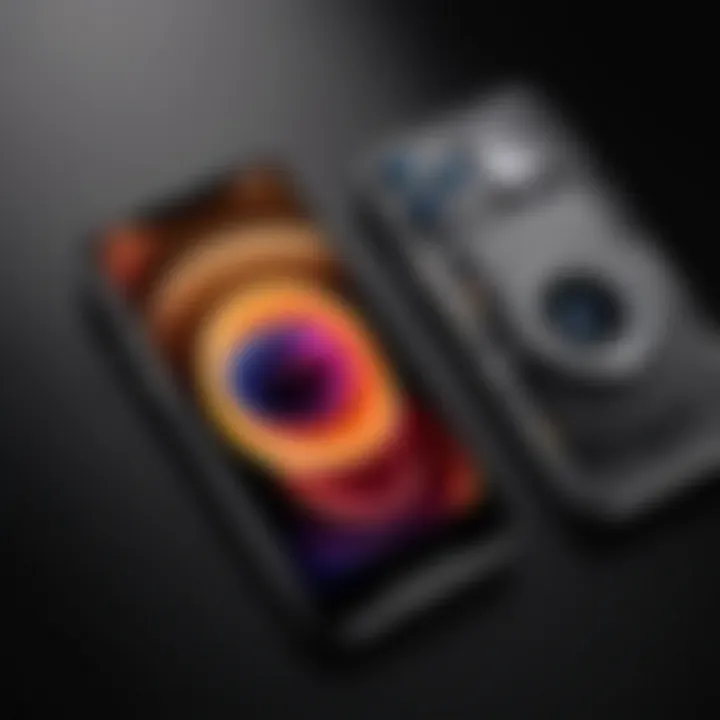
New Functionalities
More than just enhancements, iOS 17 introduces functionalities designed to simplify daily tasks and boost efficiency. One notable characteristic is the improved notification system. It arranges alerts in a more organized manner, prioritizing crucial updates and minimizing distractions. Such a feature is especially appealing in a professional environment where focus is essential.
Among the unique features is the introduction of customizable lock screens. Users can tailor their displays to better reflect their preferences and needs. This adds a personal touch, but some users might find it unnecessary, given that many still prefer traditional aesthetics.
Security and Privacy Enhancements
Security stands at the forefront of concern for many smartphone users, especially in a landscape rife with potential threats. Apple's commitment to improving security within its latest software updates is notable. With each device release, the company emphasizes its efforts to protect user data.
Recent enhancements have focused on features such as advanced encryption and improved app tracking transparency. These features aim to give users greater control over their personal information, ensuring better privacy management. Overall, the advancements in security protocols contribute positively to the overall user confidence in iPhone products.
"In a world where personal information is currency, Apple's encryption enhances user trust in its devices."
The combination of sophisticated software innovations and robust security measures reinforces Apple's reputation as a leader in mobile technology. As users seek devices that offer not only functionality but also peace of mind, these developments prove invaluable.
Comparison with Previous Models
Understanding the advancements in the latest iPhones necessitates a careful comparison with previous models. This section delves into how the iPhone 15 series, particularly when set against the iPhone 14, illustrates the ongoing evolution of technology, user experience, and design philosophy at Apple. Such comparisons are vital for discerning trends in performance, features, and pricing strategies.
iPhone vs. iPhone
The iPhone 14 series marked a solid improvement over the iPhone 13, focusing on enhanced camera technology and battery life. However, the transition to the iPhone 15 introduces even more notable changes. One of the significant differences is in the chipset; the iPhone 15 utilizes the A16 Bionic chip, offering improved performance and efficiency over the A15 found in the iPhone 14. This shift not only influences speed in processing but also enhances energy management, which is crucial for prolonged usage.
In terms of design, the iPhone 15 continues the trend of refined aesthetics. While the iPhone 14 introduced new color options and a more robust rear design, the iPhone 15 goes a step further by reducing weight and improving durability. Moreover, the materials used, such as the introduction of aerospace-grade aluminum, provide better resistance to everyday wear.
Another important aspect lies in the camera capabilities. The iPhone 15's camera system integrates advanced optical zoom features which were not available in the iPhone 14. This enhancement caters to photography enthusiasts looking for versatility in capturing images across various distances. The software enhancements also allow for improved low-light performance, aligning well with current user demands.
Performance Metrics
Evaluating the performance between these two models requires an understanding of specific metrics. User benchmarks have shown that the A16 chip in the iPhone 15 delivers significant gains in both CPU and GPU performance compared to the iPhone 14.
- CPU Improvements: The iPhone 15 demonstrates up to a 20% increase in CPU performance, allowing for smoother multitasking and quicker app launches.
- GPU Enhancements: The GPU in the A16 offers advanced graphical capabilities, which enhances gaming and graphic-intensive applications.
Furthermore, battery life remains a critical metric for users. The iPhone 15 offers approximately 15% greater battery efficiency, a notable enhancement over the iPhone 14, ensuring users experience less downtime during daily use. The integration of technology like ProMotion also contributes to higher refresh rates, which, while visually appealing, can also impact power consumption positively.
Real-World Performance Analysis
Analysing real-world performance is crucial when evaluating the latest iPhones. This assessment goes beyond benchmark scores, shedding light on how these devices operate in everyday scenarios. Users expect their phones to handle various applications seamlessly. Therefore, understanding real-world performance helps in determining the device's overall usability and efficiency.
Key elements in real-world performance analysis include responsiveness, multitasking capabilities, and how well the phone handles resource-intensive applications. It is essential to consider factors like thermal management, which affects performance under heavy usage. By focusing on these aspects, one can gauge how suitable the iPhone is for demanding tasks, whether for business or entertainment.
User Experience Reviews
User experience is a significant factor that defines the appeal of the iPhone. Reviews from actual users reveal insights into day-to-day functionality that technical specifications alone may not cover. Typical points of discussion include the smoothness of the iOS interface, ease of navigation, and the intuitiveness of new features.
The design of the iPhone also influences user satisfaction. Customers often mention how the build quality and ergonomics contribute to their comfort while using the device. Furthermore, aspects such as battery management and app responsiveness are heavily scrutinized. A positive user experience leads to increased customer loyalty and retention for Apple.
Consider this feedback from users:
“The iPhone engages intuitively with my routine. Every interaction feels deliberate and designed to improve my workflow.”
App Performance Evaluation
App performance evaluation is a vital component of assessing any smartphone, including the latest iPhone models. This evaluation examines how applications load and operate under various conditions. For IT professionals, understanding how apps perform gives insight into potential productivity gains.
When reviewing app performance, certain metrics are significant. Loading times, in-app responsiveness, and stability during multitasking sessions matter greatly. Moreover, assessing compatibility with popular applications like Microsoft Teams and Adobe Creative Cloud provides a clearer picture of the iPhone's overall functionality for professional users.
Innovations in the iPhone's hardware and software also impact app performance. The integration of optimized processors allows for smoother operation of demanding applications. Key performance indicators include:
- Load times: Are applications swift to respond upon opening?
- Stability: Do apps function reliably without crashes?
- Multitasking: How well can the iPhone handle multiple applications at once?
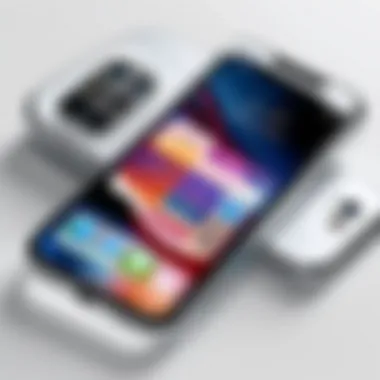
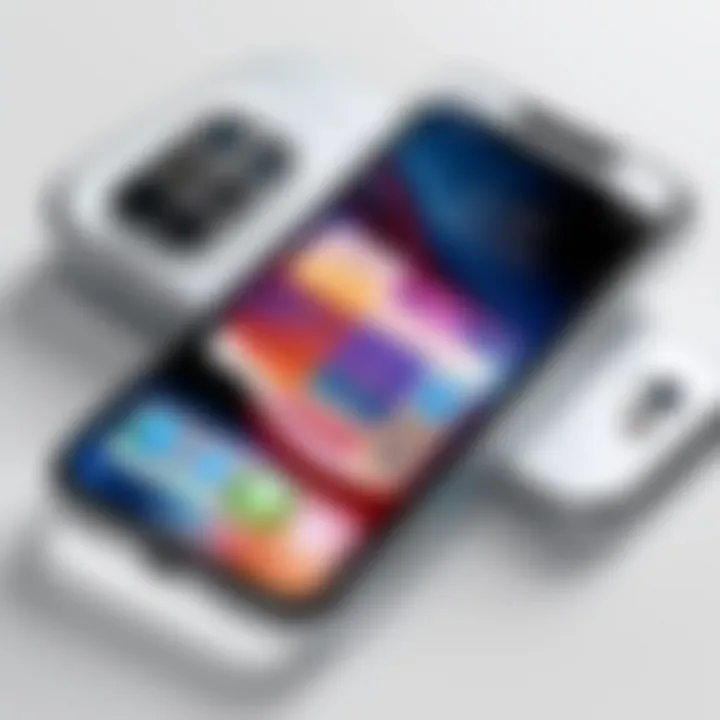
Pricing and Market Position
In the realm of high-tech smartphones, understanding Pricing and Market Position is critical for professionals and enthusiasts alike. These elements dictate not only the purchasing decisions of consumers but also the strategic positioning of Apple within a competitive landscape. A well-considered pricing strategy reflects the value proposition of the latest iPhones, helping to reinforce the brand's premium image while maximizing profitability.
The latest iPhone models have been introduced with distinct pricing tiers, allowing Apple to target various segments of the market. This approach speaks to the wider trend of premium pricing in the smartphone sector, which often correlates with advanced technology and exclusive features that some consumers are willing to invest in. Consumers can compare the price differences among models like the iPhone 15 Pro and the iPhone 15, helping them to assess which features are worth the incremental cost.
Pricing Strategies
Apple employs several pricing strategies that enhance the overall attractiveness of its products. These strategies include:
- Skimming Pricing: Introducing new models at a high price point to maximize revenue from early adopters. This method captures the willingness of die-hard fans to pay for the latest technology, allowing Apple to recoup development costs quickly.
- Tiered Pricing: Offering different versions like the iPhone 15 and iPhone 15 Pro at various price points. Each model has its own set of features, targeting both budget-conscious customers and those seeking premium specifications.
- Bundled Offerings: Apple often bundles services like Apple Care and subscription models, which creates added value around the products and can influence consumers’ overall value perception. These combinations can be appealing when factoring in long-term costs.
The end goal is to make iPhones accessible to a broad audience while maintaining a luxurious allure. This tiered approach allows customers to find a model that fits their needs and budget, encouraging upgrades over time.
Competitor Analysis
Analyzing Apple's market position requires a look into its competitors. As we compare the pricing and features of Android devices like Samsung's Galaxy series or Google's Pixel range, notable differences emerge. Samsung has traditionally offered a range of devices that span various price points, often competing directly with Apple's mid-tier products. Google's Pixel series focuses more on camera technology and software integration, appealing particularly to photography enthusiasts.
An effective analysis reveals several points:
- Market Trends: High-end smartphones continue to dominate sales, as consumers are increasingly willing to pay for advanced features. Both Apple and its competitors are now adopting similar design languages and functionalities, blurring the line significantly.
- Brand Loyalty: Apple’s ecosystem, including services like Apple Music and integration with the iPad and Mac, generates a high rate of brand loyalty that often influences purchasing decisions.
- Cost-Effectiveness: Competitors sometimes offer similar specifications for a reduced cost, necessitating that Apple justify its premium prices by highlighting feature advantages such as superior build quality, exclusive software capabilities, and customer service.
"In today's market, consumers often look beyond the device itself; they consider the entire ecosystem and the long-term value for their investment."
The ongoing competition pushes all brands, including Apple, to innovate continuously. In this environment, Pricing and Market Position not only guides consumer choices but also shapes ongoing product development and marketing strategies. Understanding these dynamics is essential for anyone assessing the potential impact of the latest iPhones in today's fast-evolving smartphone market.
Future Prospects for iPhone Technology
The realm of iPhone technology is ever-evolving, and understanding its future prospects is crucial for both IT professionals and tech enthusiasts. The advancements seen in recent iPhone models provide insight into what Apple might focus on in the years to come. This section explores potential technological innovations and their implications for the smartphone market, helping stakeholders make strategic decisions.
Predicted Technological Advances
As Apple continues to refine its iPhone line, several key areas for technological advancement emerge:
- Augmented Reality (AR) Integration: There is a strong possibility that future iPhones will enhance AR capabilities. This may include improved sensors or dedicated hardware for more immersive experiences.
- Artificial Intelligence (AI) Enhancements: The use of AI in smartphones is increasing. Future iPhones could feature superior AI processors for better performance in tasks like photography, voice recognition, and personal assistance.
- Eco-Friendly Materials: Sustainability is becoming a priority. Apple might explore using recycled materials more extensively in their devices, reducing environmental impact.
- Improved Battery Technology: One of the key focus areas will likely be better battery life, possibly through solid-state battery technology, which promises longer lifespan and faster charging.
These advances can not only elevate user experience but also position Apple as a leader in innovation within the smartphone landscape.
Impact on the Smartphone Market
The influence of upcoming iPhone technologies on the smartphone market is profound. As Apple drives innovation, competitors must respond or risk obsolescence. Here are some anticipated impacts:
- Market Competition: With each technological leap, Apple sets benchmarks for competitors. Companies like Samsung and Google will need to match or surpass these developments to maintain their market relevance.
- Consumer Expectations: As iPhones become more sophisticated, consumer expectations will also rise. Users will demand better performance, usability, and functionality, thus reshaping the entire industry’s approach to smartphone design.
- Price Dynamics: Advanced technologies may lead to increased costs. In turn, this could create shifts in pricing strategies, forcing brands to reconsider how they position their products.
"Innovation does not happen in a vacuum. It shapes and is shaped by market dynamics and consumer behavior."
- Ecosystem Expansion: As new technologies are introduced, Apple can further integrate its ecosystem. This interconnectedness between devices may enhance user retention and deepen customer loyalty, impacting overall market dynamics.
The future prospects for iPhone technology indeed promise a landscape rich with potential changes and adaptations that will shape the smartphone industry for years to come.
Culmination: The Current Landscape of iPhones
In the rapidly evolving technology market, the significance of analyzing the latest iPhone models cannot be overstated. The current landscape represents a culmination of innovation, consumer demand, and strategic shifts by Apple. Understanding how these factors come together is crucial for IT professionals and tech enthusiasts alike. This conclusion synthesizes the critical findings of the article, providing a holistic view of the iPhones as they stand today.
Summary of Findings
- Overview of Innovations: The iPhone 15 series introduces groundbreaking technologies, especially in the realm of camera capabilities and display quality. The enhancements made in photography and video recording cater to both casual users and professionals.
- Performance Metrics: The incorporation of advanced chipsets ensures that the most recent iPhones not only match but often exceed the performance benchmarks set by previous models. This results in smoother multitasking and improved application responsiveness.
- Software Developments: iOS updates are designed to leverage hardware improvements fully, enhancing user experience while maintaining security. Apple has continually prioritized privacy, which appeals to a discerning user base.
- Market Positioning: The strategic pricing of iPhone models reflects an understanding of market dynamics, enabling Apple to maintain its competitive edge. The company positions the new devices as premium products while making them accessible to a broader audience.
"The iPhone's evolution is not just about technology; it’s a testament to Apple’s understanding of user needs and market trends."
Final Thoughts
The conclusion drawn from this in-depth examination of the latest iPhones highlights that Apple has not just kept pace with industry changes, but it is actively shaping the future of smartphones. As devices become an integral part of daily life and business operations, understanding their capabilities becomes imperative.
Specifically, the impact of the latest iPhones extends beyond personal use. They represent a significant development for businesses implementing mobile solutions, enhancing both operational efficiency and user engagement. As technology continues to advance, the relevance of features such as battery capacity, performance, and camera technology persists.
In summary, the current landscape of iPhones is marked by innovation, strategic pricing, and user-centric design. For IT professionals and tech enthusiasts, staying informed about these developments is crucial for leveraging technology in both personal and professional contexts.



